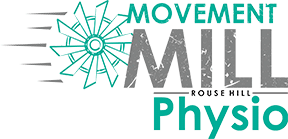After what seemed like weeks on end of bad news, Australia has been recently getting a bit of good news with the latest round of restrictions being lifted. It’s definitely not a back-to-normal situation, but what it has meant for exercise junkies is, we can now start going for our regular exercises and classes without the niggling fear if COVID-19 tapping us on the shoulder.
This creates a situation that I describe as a “dependent-ideal” one; basically, it could be helpful or cause an increase in the number of physio visits within the next two to three months. Due to the lockdown, most people who have been having little to no exercise are suddenly running, jumping, squatting, lunging, twisting, rowing and injuries are literally a wrong twist or turn away. Tendinopathies and back injuries are common injuries that occur when exercise is done with little or no preparation (warm ups or graded activities).
HOW TO PREVENT THIS?
TAKE IT SLOWLY
I know it’s been quite a while since you felt the exhilaration of the wind in your hair as you clocked your usual kilometers on your weekend run but going straight back to the same level of intensity is a bad idea. This is the same for weight work or any form of fitness related activity you have been out of for a prolonged period.
According to evidence, one of the chief causes of musculoskeletal injuries is overloading a soft tissue or joint too quickly. Though the overload principle of stressing the body is an age-old mainstay in the fitness arena; and does have significant benefits, it must be applied with reference to current physical status.
My take? Start at 50% of whatever you were doing; that could be 50% of your training frequency, intensity or load. Maintain that level of intensity for 2 weeks of regular exercise participation and progress by increasing this level by 10-20% every week.
LISTEN TO YOUR BODY

It is totally normal if after your first few days of getting back, you feel a bit down or it takes you longer to recover from muscle soreness. If you begin to feel unwell again or you felt completely wiped out by the activity you did, then just move back a step and try again with something easier when you feel able. This is more subjective as this is based on how you feel before and after exercise. This also offers you the opportunity to know your body and build your confidence. Making sure you work within a specific level of fatigue or stress allows you to know what you can and cannot tolerate down the line when you are hitting your high level or long-term goals. The key is to give yourself time to recover and STAY POSITIVE!!!!
EAT WELL
I cannot state the importance of diet in recovery science. Evidence shows that there is significant reduction in rate of loss of muscle tissue after prolonged periods of retraining with a high protein diet compared to a diet that did not specifically focus on protein. What this means is that your diet should mirror your fitness goals. There are many diet plans targeted at specific fitness outcomes. The key is to know what your target is and always have an adequate amount of carb, protein and water in your diet. If you are returning to a more aerobic activity like regular running or cycling, you might want to increase your carb intake to match your energy expenditure.

In summary, the most important thing in any kind of preparation geared towards returning to activity is graded and gradual with attention to any bodily changes that might occur along the way. Remember staying injury free will help you get more out of your sessions and activities. LETS GET MOVING !!!!!!
Written By Kojo Arthur – Physiotherapist

